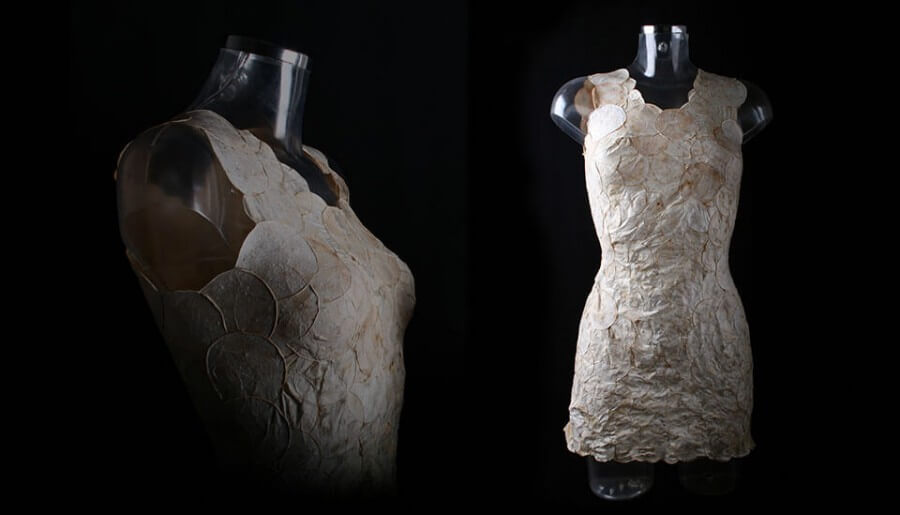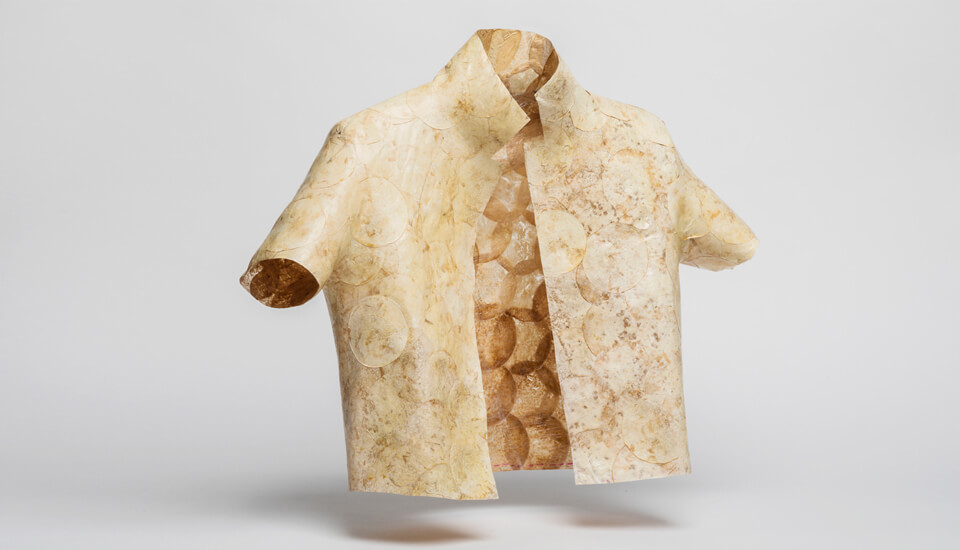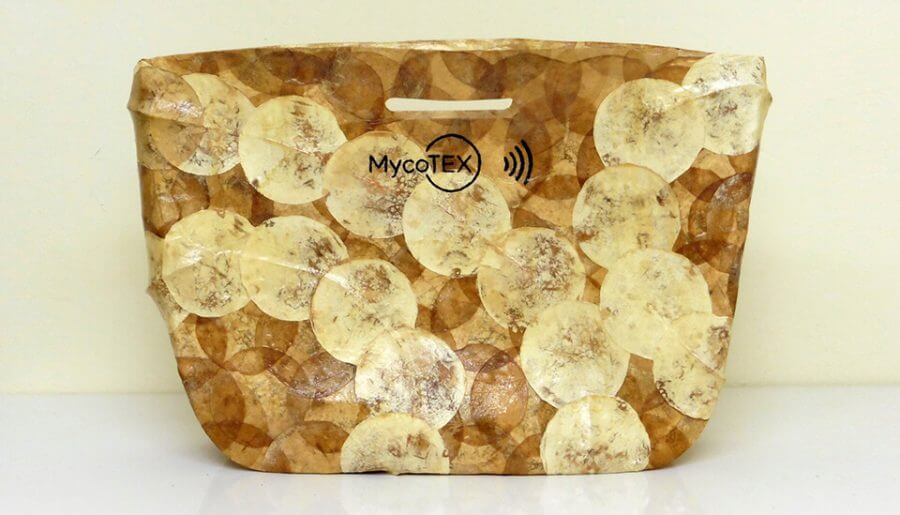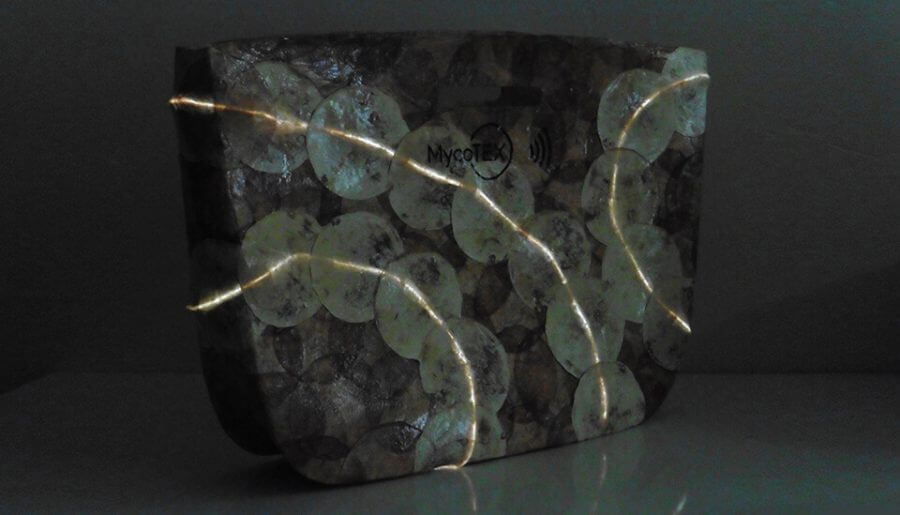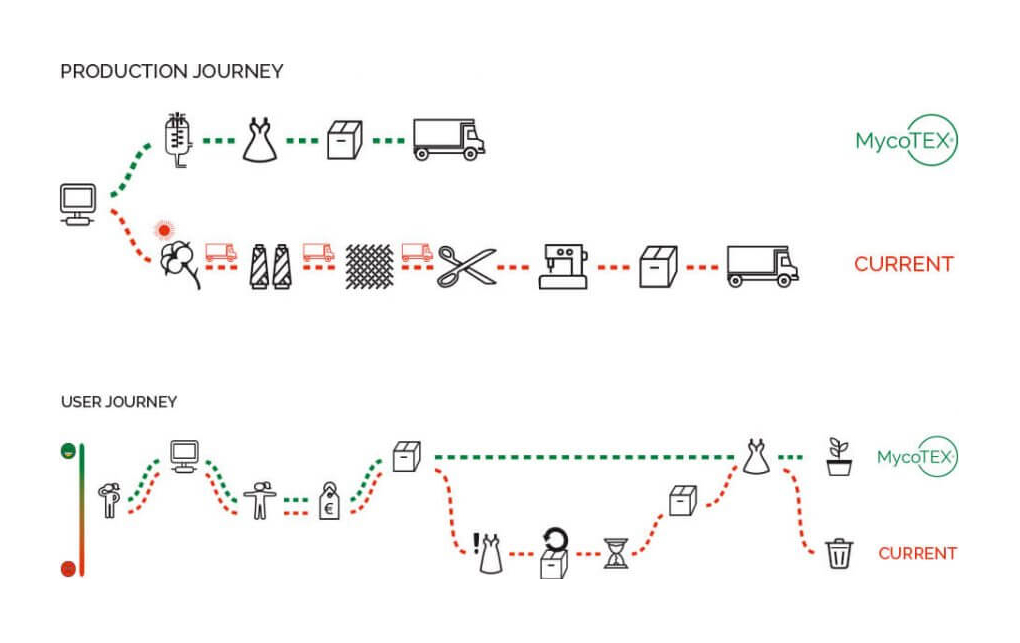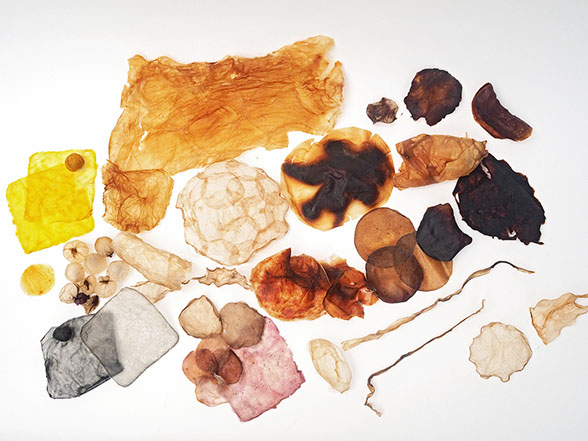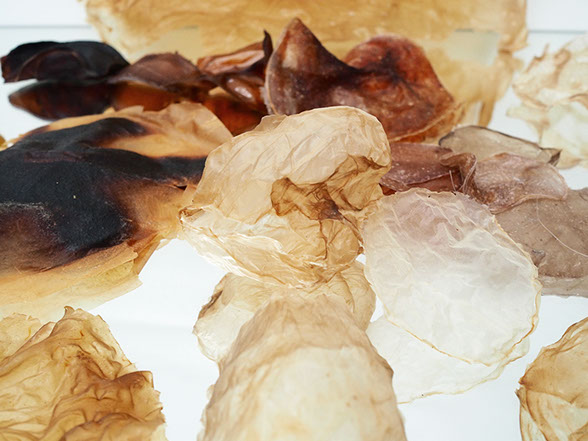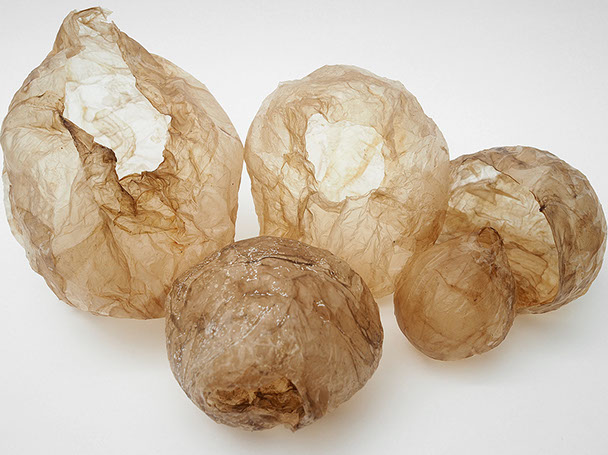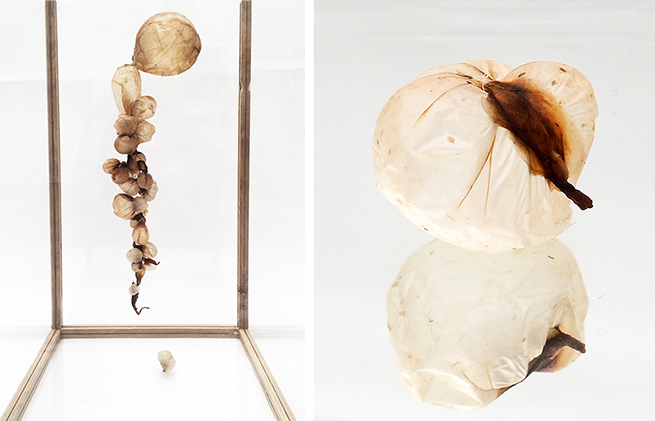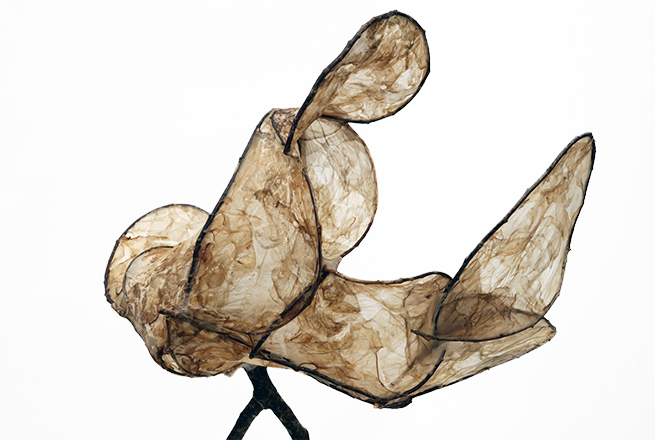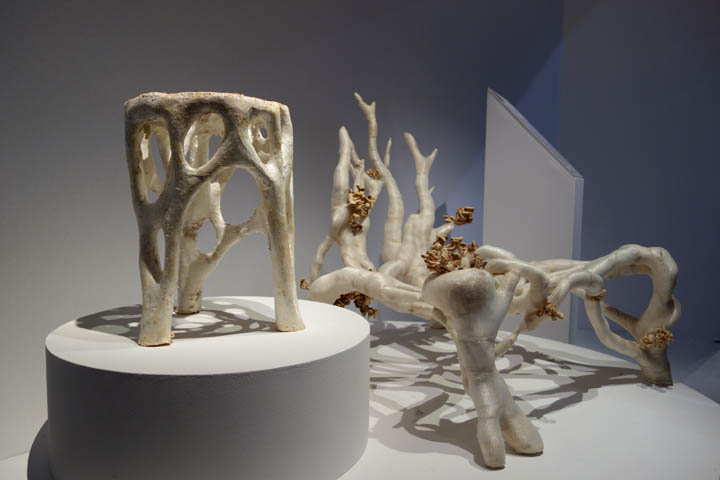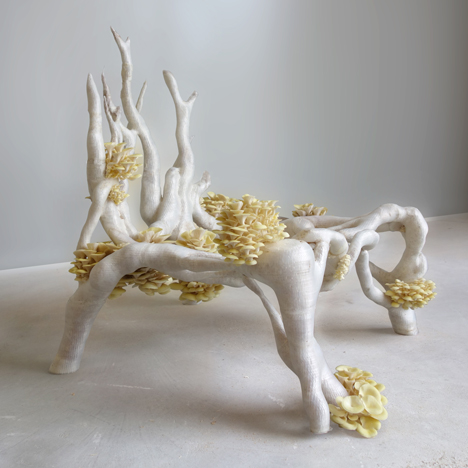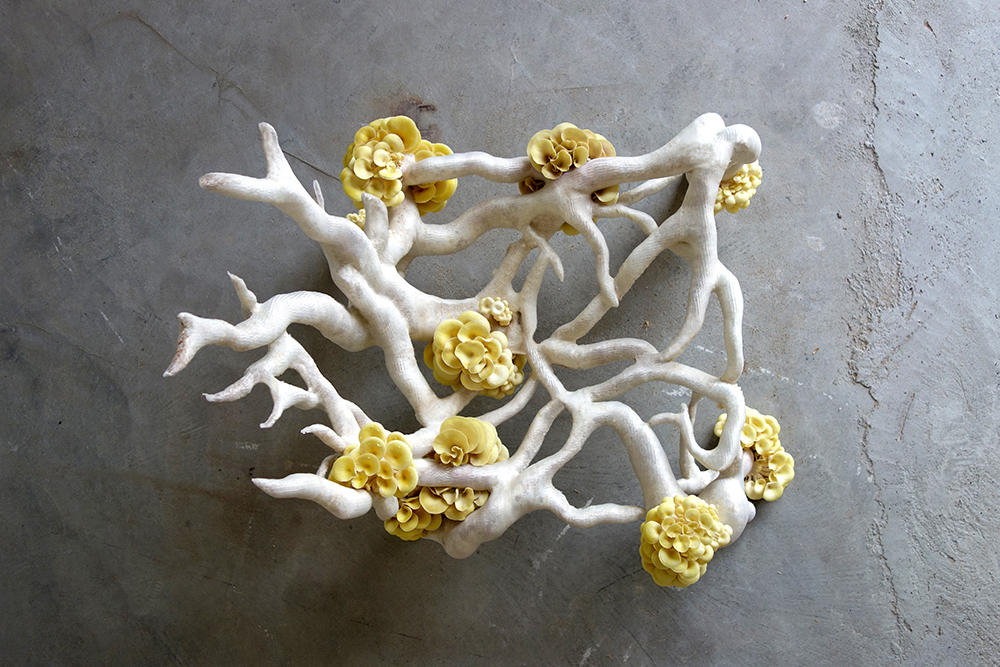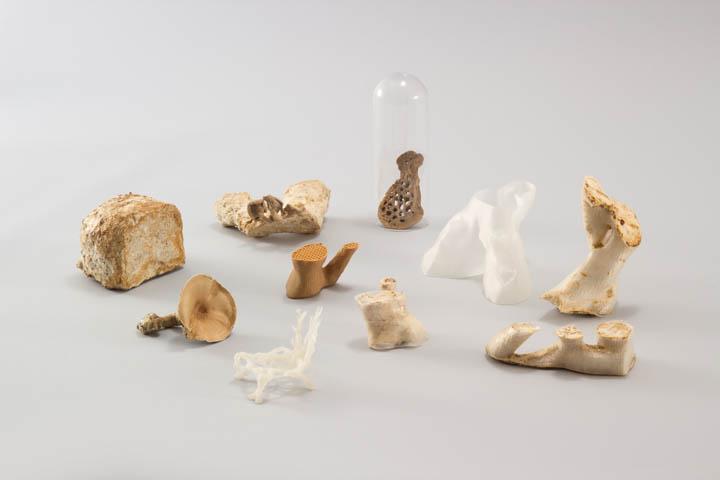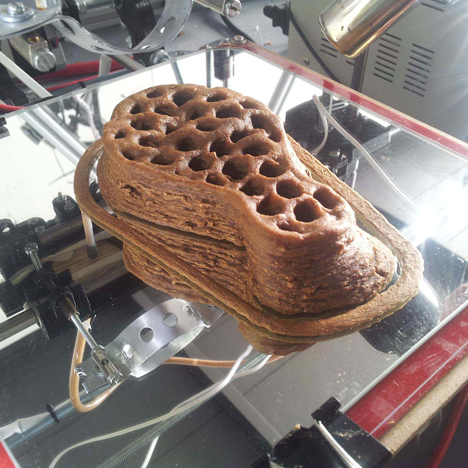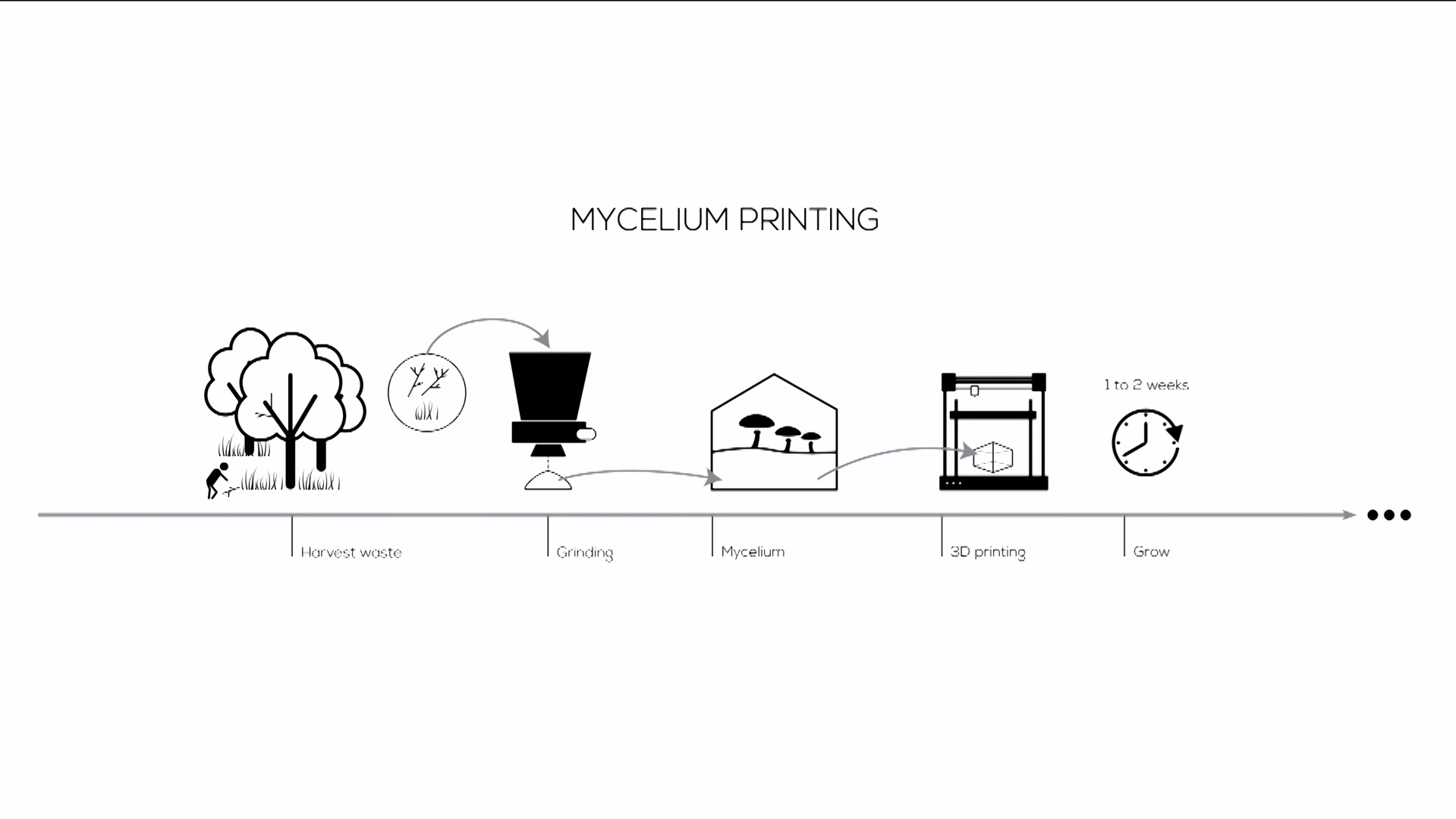project04:Case Studies
Case Studies
This section provides a wide variety of cases studies of projects which use mycelium as their product material. Each of the projects answers the same questions in order to create a clear and compareable overview.
Mycotex
What is Mycotex?
MycoTex is a project focuses on the use of mycelium as a textile. With this bio-based textile the designer aims to create fashion with it.
Who designed Mycotex?
Mycotex has been designed by Aniela Hoitink. Miss Hoitink has a background in Fashion Design at the Utrecht School of Arts.
What properties does the fungi have?
In this case the designer was able to create a mycelium product with flexibility which could replace regular fabrics.
What techniques have been applied?
First of all Mycotext is produced by the usage of pure mycelium. This is done by cultivating spores of the fungi on a agar substrate. Within these substrates the designer expiremented with different fabrics where the fungus could grow on. These include wool, linen, cotton, silk, polymer based fabrics as well as fabrics combined of those materials. Besides the different materials the fabrics are based on she varied in fabric density.
To specify the the production even more, the pure mycelium was grown on agar agar and a maceraat of mycelium. Agar agar is a bio based growth medium and maceraat is a liquid where mycelium has been laid into in order to create an extract.
From these expirements the designer concluded that in order for mycelium to form the fabrics need to be loose. Because mycelium cannot grow on fabric which is tightly/densely constructed. Another problem is that she noticed that the fungus is not able to consume the fabrics, that meant she had to provide it with food whenever the test sample ran out of food. But overal she was not satisfied with the results.
Than she used another methode in order to grow mycelium. This is a method designed by the University of Utrecht and creates floating mats of mycelium. REQUIRES MORE RESEARCH. While these mats are still wet and growing she describes them to be flexible but brittle when dried. In her case she needed the material to be flexible in a dried stated and therefor she tried different fluids to make it more flexible once again, fluid like oil and vinegar. Eventually she found a way to make it flexible but she does not describe which fluid she has used for that.
What fungi has been used?
For this project the following species of fungi has been used: "Schizophyllum commune".
What qualities can be of value for my own project?
One of the intreseting things about this project is the fact that mycelium can be grown in such a way that it has a certainflexiblity. But what is more interesting is the fact that miss Hoitink has integrate lighting and a NFC chips into a bag. With the properties of mycelium being able to grow itself together it could mean that these thin textile like mycelium could be used as some sort of wall finish for a mycelium based wall. That than would mean lighting, sensors or other mechanical devices could be integrated into the wall.
More information.
For more information about MycoTex please visit the website Neffa.nl.
The photos are property of the original designers and can be found on their own respective websites
Dietz, J. Mycotex. Retrieved from https://neffa.nl/
Caroline de Roy - Antropomorphologies
What is Antropomorphologies?
Antropomorphologies is a project focuses on the use of mycelium as a biodegradable replacement for transparant and translucent syntheticly produced materials, with the same durability and strength. This project takes shape into a series of sculptures which refers to the wide variety within the humanrace.
Who designed Antropomorphologies?
Antropomorphologies has been designed by Caroline de Roy. Miss de Roy has a artist at Rietveld Academie.
What properties does the fungi have?
In this case the designer was able to create a mycelium product with translucent and transparant properties.
What techniques have been applied?
Antropomorphologies is produced by growing the mutated strain of the Schizophyllum commune fungi in a bath to create floating mats of transparant mycelium. When growns these sheets appear to be very brittle. In order to increase the elasticity and firmness of the material miss de Roy mixes in some kombucha (bacterial cellulose). But it has not been described in what way the material has been mixed in. Within the describtion it is stated that spent flowers are mixed in as well in order to create intresting results. But what those results are is not explained either.
What fungi has been used?
For this project the following species of fungi has been used: "Schizophyllum commune". But in this case the designer has used a mutuated version of this fungus called SC3.
What qualities can be of value for my own project?
It is very intresting to see that fungi can be transparant as well. In full potential this type of fungi could replace everything that is of transparancy within the building. First of all that could mean that areas that are supposed to function as windows can be made out of fungi. By keeping in mind that fungi grows on the consumption of organic material that could mean a wall can be grown over part of the window and therefor connecting the window and the wall together into one. For now I have not read or seen anything that combines multiple strains of fungi into one. Neither have I read that it is impossible to do that sort of thing. Besides providing a replacement of windows it could be a replacement of a product that would function as a glass bulb.
More information.
For more information about Antropomorphologies please visit the website Carolinederoy.nl.
The photos are property of the original designers and can be found on their own respective websites
de Roy, C. (2016). Antropomorphologies. Retrieved from http://www.carolinederoy.nl/antropomorphologies.html
Studio Eric Klarenbeek - Veiled Lady 2.0
What is the Veiled Lady 2.0?
The Veiled Lady 2.0 is a project that focuses on 3D printing with mycelium. With this project the designer aims to solve the problematic chain of waste production both in the fabriction as well as the impact on our environment caused by the products.
Who designed the Veiled Lady 2.0?
The Veiled Lady 2.0 has been designed by Eric Klarenbeek. Mister Klarenbeek has a background in design at the Design Academy Eindhoven.
What properties does the fungi have?
The properties of this fungus is not perticulairly special, it does not differ form the regular properties of this species. But what makes this project different is the way in which the fungi is grown.
What techniques have been applied?
As mentioned in the brief describtion of the project, this project makes use of 3D printing. First Studio Eric Klarenbeek gathers local agricultural waste. This waste is than grinded into very small particles. With these particles are then cultivated with mycelium for a short period of time. After this the mixture is transformed into a printable paste, propably with water. The next step in this process is the printing of the outer layer which behaves like the mould of the project. This outer layer is printed by using a bio based filement like PLA created from local potato waste. When the outer shell is printed it can be filled up with the mycelium-agriculture paste. Or the outer shell and the paste can be printed some what simultanious. Whenever the model is printed the product is stored in a dark, sealed moist space. So the mycelium can consume and grow all over the agricultural paste. When the mycelium has fully grown it can be dried or baked in order to stop the fungi from further growth.
What fungi has been used?
For this project the following species of fungi has been used: "Schizophyllum commune".
What qualities can be of value for my own project?
3D printing of mycelium shows a lot of potential. The potential can be traced back to the fact that the mould is 3D printed instead of the regular vacuum formed moulds. With 3D printable moulds the range of free form and complex shapes becomes more realiseable which implies I can use complicated geometry to design my buildings with.
More information.
For more information about the Veiled Lady 2.0 please visit the website Ericklarenbeek.com.
The photos are property of the original designers and can be found on their own respective websites
Dietz, J. Mycotex. Retrieved from https://neffa.nl/
Mycelium Tectonics - Mycelium Cotton composites
http://mycelium-tectonics.com/2015/04/hemp-simulation-02-analysis/ overview
http://mycelium-tectonics.com/2015/04/big-model-350mm-high-_-01/ Columns
http://mycelium-tectonics.com/2014/12/hemp-structure-walls/ wall fibers
http://mycelium-tectonics.com/2014/10/pleurotus-fiber/ fibers and mycelium
http://mycelium-tectonics.com/2014/11/hemp-structure-benchmark/
http://mycelium-tectonics.com/2014/09/in-vitro-mycotests/ tests
http://mycelium-tectonics.com/2014/09/in-vitro-mycotests-02/ tests
http://mycelium-tectonics.com/2014/10/in-vitro-petrimask/ tests
Mycelium-tectonics.com
Jonas Edvard - Mycelium Fiber composites
Scientific research has shown that fungi can degrade toxic and persistent waste materials such as plastics, converting them into edible fungal biomass. LIVIN Studio started working with fungi, such as Schizophyllum commune and Pleurotus ostreatus. As fungi break down the plastic ingredients without storing them in their bodies, like they do with (heavy) metals, they can be edible.
LivingStudio.com
Mycelium Textile - Mycelium Shoes
‘Growing Shoes’ shows the results of experiments in Mycelium to see how shoes can be shaped into solid and hollow models. Solid shapes function as heels, platforms and insoles of the shoe. In order to achieve these shapes, different waste streams such as coffee grounds and sawdust are used as substrates. The hollow shapes are grown pure in bottles or on fibers such as hemp and psyllium to achieve strength and structures. After harvesting, the pure Mycelium becomes a clay looking white material is then used to cover some parts of the heels or moulded onto the lasts.
http://shoedesigner.be/project/210/
http://shoedesigner.be/project/growing-shoes/
http://shoedesigner.be/project/sportive-vegan/
Jonasedvard.dk
Mycelium Textile - Mycelium Shoes
Mycelium has the natural ability to fuse together smaller pieces of organic material into a greater whole, with analogous qualities to petroleum based open and closed cell foam. Artefacts that are made from living mycelium will bind together in as short as one day if placed in contact with one another, forming an organic weld that permanently joins two objects together.
http://www.fungal-futures.com/Polyominoes-Maritime-Fungi
Mycoworks.com
